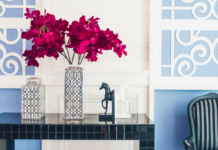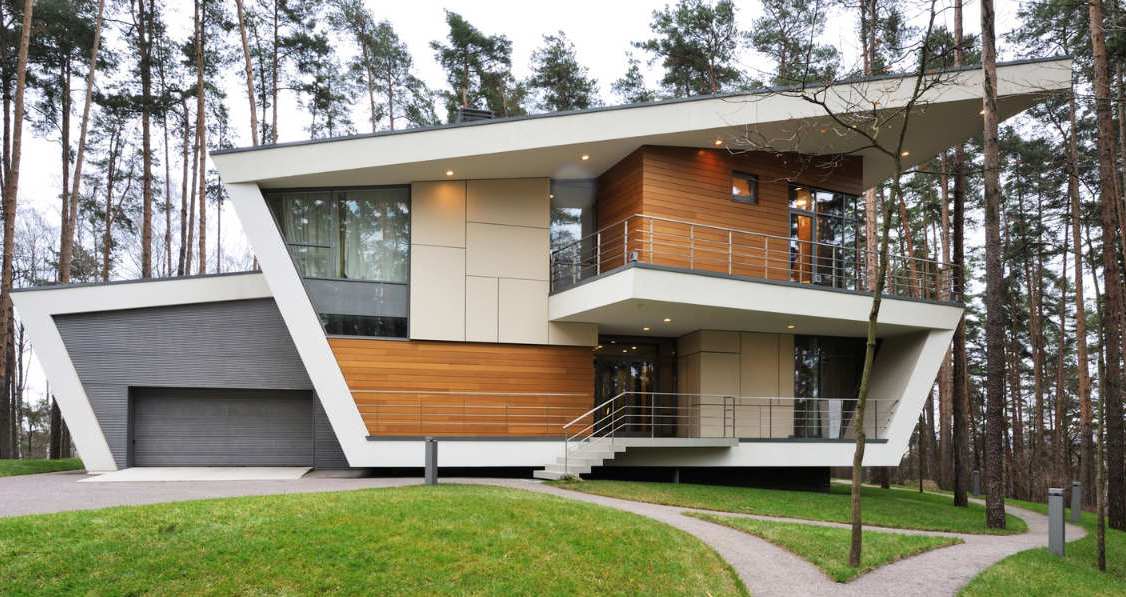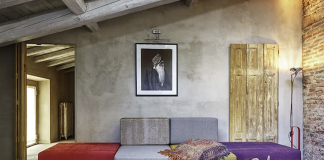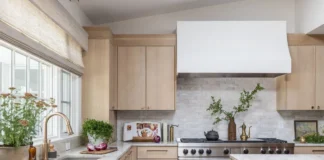Transforming your living space can be as simple as integrating custom wooden pieces into your decor. The charm and warmth provided by wood elements can completely redefine the room feel, making it more cozy and visually appealing. By selecting, designing, customizing, and maintaining the right wooden pieces, you can elevate your home decor to a whole new level. From classic hardwood finishes to rustic reclaimed wood, the endless possibilities of incorporating wood into your space are worth exploring.
Selecting the Right Custom Wooden Pieces
Types of Custom Pieces
If you’re looking to make a statement with your home decor, choosing the right types of custom wooden pieces is essential. There are various types of wood furniture to consider, such as tables, chairs, shelves, and cabinets. Each piece of furniture serves a unique function and can add a specific flair to your home interiors. Whether you prefer a rustic wood table or a sleek, modern wooden chair, the types you choose will influence the overall aesthetic. Mixing different wood tones can also create a balanced and harmonious look that is pleasing to the eye.
Integrating custom wooden pieces starts with understanding the different options available. You might opt for a solid hardwood piece that emphasizes natural wood grain and adds texture to your room. Reclaimed wood furniture can bring a sense of history and uniqueness to your decor. Whether it’s dark wood for a dramatic effect or lighter tones for a softer look, the materials you choose set the foundation for your interior design. When mixing wood tones like a pro, it’s important to ensure that the pieces complement each other and blend seamlessly with the existing decor.
Choosing Quality Materials
When selecting custom wooden pieces, the quality of the materials is paramount. High-quality wood ensures durability and longevity, keeping your decor intact for years to come. Look for pieces made from solid hardwoods like oak, walnut, or cherry, which offer a resilient and robust structure. Also, consider the undertones and how they mesh with your overall decor. Warm tones can create an inviting ambiance, while cooler wood tones might provide a more modern and clean look. Paying attention to the wood grain and finishes can help you identify quality craftsmanship.
Investing in quality materials also means looking at the wood color and finishes carefully. Some woods have natural warm tones that infuse coziness into the room, while others have dark, sleek finishes that give a sophisticated touch. Reclaimed wood is another great choice for both aesthetic appeal and sustainability. By selecting wood pieces with durable finishes, you ensure that they can withstand daily wear and tear. Additionally, consider mixing different wood tones to create a layered, textured look that stands out. Proper selection of materials is a way to add character and depth to your decor.
Designing Your Space
Planning and Layout
The first step in designing your space with custom wooden pieces involves careful planning and layout. Determine the focal points of your room and decide where each wood piece will fit best. For a cohesive design, map out how the pieces will work together within the space. Consider the placement relative to other furniture, windows, and doors. By thoughtfully planning the layout, you ensure that the wooden pieces contribute to a balanced and functional room design. This preliminary step is crucial, as it sets the tone for your entire home decor.
Planning the layout also includes ensuring that the chosen wood tones like a pro create harmony in the room. Whether you are integrating a prominent center piece of furniture or subtle wood trim, each element should be placed where it enhances the function and aesthetics of the space. A well-planned layout makes the room feel more open and inviting. Additionally, by preemptively planning, you can avoid overcrowding and ensure that each wood piece is highlighted properly. This step involves a bit of foresight but pays off with a beautifully orchestrated interior design that feels natural and welcoming.
Coordinating with Existing Decor
One of the keys to successfully integrating custom wooden pieces is to coordinate them with your existing decor. Aligning your new wooden elements with the current home decor ensures a uniform look. Pay attention to the dominant wood tone in your room and choose pieces that complement it. Mixing wood tones doesn’t mean they have to match exactly but should share some common undertones or finishes. For example, a natural wood coffee table might blend seamlessly with dark wood floors if the undertones align, making the entire room feel cohesive.
Strategically mixing wood tones like a pro involves considering the overall color palette of your home interiors. Neutral color schemes, for instance, can be an excellent base for showcasing different wood elements. Additionally, contrasting colors and textures in your decor can create a more dynamic and visually appealing room. Ensure that the wood tones and finishes of new pieces do not clash with existing ones. This process might include trial and error, but the goal is to make your decor look intentional and well-thought-out. By being mindful of the undertones and finishes, you can blend the old with the new beautifully.
Customizing Wooden Pieces
Personalization Options
Personalizing your wooden pieces can bring a unique charm to your decor. Adding custom engravings, paint finishes, or even unique wood grains can make a piece truly one-of-a-kind. Personalization allows you to incorporate elements that reflect your personal style and preferences. Whether it’s adding a family name on a reclaimed wood sign or painting a piece to match your home’s color scheme, these custom touches make your wood furniture more meaningful. Incorporating personalized features elevates the overall impact of your decor, making it not just beautiful but also reflective of who you are.
The range of personalization options is vast, allowing you to get creative with your customization. You can choose to change the wood grain by opting for a different cut or finish, making each piece of wood unique. Staining and painting are also excellent ways to add your touch. For those who enjoy a bit of DIY wood projects, you can even modify existing pieces or build your own to match your decor needs. Customizing wooden pieces not only makes them stand out but also ties in other elements of your home, bringing everything together with a personal flair. If you’re looking for inspiration, consider a personalized recipe book to add a custom touch to your kitchen.
DIY Enhancements
DIY enhancements are a fantastic way to add your personal touch to custom wooden pieces. Whether it’s sanding down rough edges, applying a fresh coat of stain, or attaching new hardware, these modifications can make a significant impact. For those who enjoy hands-on projects, creating your own wood furniture can be incredibly rewarding. DIY projects give you the freedom to experiment with mix wood tones and finishes that align perfectly with your decor. This is an excellent option for those who want to infuse their personality into their home while enjoying the process of creation.
Another way to add DIY enhancements is by incorporating different wood elements into a single piece. For example, mixing light and dark wood tones can create a striking contrast that adds interest and depth. Additionally, you can use reclaimed wood for unique textures and character that new wood might lack. Adding wood trim or creating patterns with different grain types can also elevate the design. DIY projects are not only cost-effective but also allow for endless customization possibilities, ensuring that your home decor is both unique and tailor-made to your taste.
Placement and Arrangement
Highlighting Key Pieces
Highlighting key pieces is essential to make your custom wooden furniture stand out. Focus on placing these pieces in areas where they can serve as focal points in the room. A beautiful, reclaimed wood coffee table would look stunning in the center of your living room, drawing attention and adding character. Similarly, a classic hardwood bookcase might be best placed against a wall where it can be easily seen and appreciated. Highlighting key pieces not only showcases their uniqueness but also enhances the overall room feel by adding distinctive and meaningful elements.
Strategically placing key custom wooden pieces can dramatically enhance your home decor. Position a striking wood piece in a high-traffic area to ensure it gets the attention it deserves. Consider lighting to highlight the wood grain and color, making the piece stand out even more. Using mix wood tones like a pro can create layers and textures, giving depth to the room. Highlighting doesn’t just mean visual placement; it also involves making sure these pieces are functional and complement other elements in the room. A well-placed wooden piece can transform an entire space, becoming the beloved centerpiece of your decor.
Functional Arrangement
Functionality is key when arranging custom wooden pieces in your decor. Beyond aesthetics, each piece must serve a practical purpose and add value to the space. For example, a beautifully crafted wooden dining table not only offers a place to gather with family but also becomes a focal point for the room. Similarly, wooden shelves can provide much-needed storage while adding to the overall decor. Considering the functionality ensures that the wood pieces are not just beautiful additions but also enhance the usability of the space.
Arranging your wooden pieces in a functional manner means thinking about how they fit into your daily life. A piece of furniture, like a wooden bench in the entryway, adds both style and practical seating. When arranging your decor, think about ease of access and the flow of the room. Proper layout ensures that while the pieces are visually appealing, they are also readily accessible and useful. Functional arrangement complements the aesthetic aspects, making sure each wooden piece enhances both the beauty and utility of your home. This balance contributes significantly to a well-organized and harmonious living environment.
Maintenance and Care
Cleaning and Preservation
Maintaining custom wooden pieces involves regular cleaning and preservation to keep them looking their best. Dusting frequently with a soft cloth can prevent buildup and maintain the wood’s natural luster. For deeper cleaning, a mild soap solution can be used, but avoid harsh chemicals that might damage the finish. Applying wood polish or wax occasionally can help preserve the wood grain and enhance its natural beauty. Proper maintenance not only keeps your wood furniture aesthetically pleasing but also extends its lifespan, ensuring it remains a cherished part of your decor.
Preserving the beauty of your custom wooden pieces requires more than just surface cleaning. Protect them from direct sunlight and extreme temperatures to prevent warping and discoloration. Using coasters and placemats can prevent scratches and stains, preserving the wood finish. Additionally, consider the humidity levels in your home, as too much moisture can harm the wood. Regularly inspecting your wooden furniture for any signs of wear and tear ensures that small issues are addressed before they become major problems. Consistent care and attention to detail will help keep your wood pieces looking pristine and feeling luxurious for years to come.
Repair and Upkeep
No matter how well you maintain your decor, minor repairs and upkeep will be necessary over time. Small scratches can often be fixed with touch-up markers or wood filler that matches the wood color. For more significant damage, such as cracks or loose joints, professional repair may be required. Regularly tightening screws and bolts on wood furniture can prevent future problems. If the finish becomes worn, consider refinishing to restore its original beauty. Keeping up with these small maintenance tasks ensures that your custom wooden pieces remain in excellent condition and continue to enhance your decor.
Staying proactive with repairs and upkeep can prevent minor issues from becoming major headaches. Sanding and re-staining can restore a piece to its former glory, even if it has been heavily used. For DIY enthusiasts, learning basic wood repair techniques can be both cost-effective and rewarding. Use wood glue for minor cracks and clamps to hold pieces together while drying. Regular upkeep gives your wooden furniture a longer life and helps maintain its visual and functional appeal. Proper repair and maintenance ensure that your cherished custom pieces remain a vibrant and integral part of your home decor.














